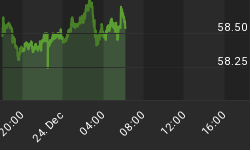The first word out of Ben Bernanke's mouth after President Bush nominated him to succeed Alan Greenspan as chairman of the Federal Reserve Board was "continuity." Of course, this was to sooth the global financial markets that no radical changes in the conduct of monetary were imminent when Bernanke takes the helm. But I believe the continuity concept runs deeper than even Bernanke realizes.
Bernanke has been an advocate of the Fed adopting a formal target for the rate of growth in the prices of goods and services. That is, the Fed should pick some definition of a general index of goods/services price increases - e.g., the CPI or the PCE chain price index, perhaps with a core concept - and specify a minimum and maximum rate of tolerable growth in this index over some period of time, perhaps a two-year period. Would this be a radical change in policy conduct from Greenspan's tiller time? Not in substance, in my opinion. Everyone knows that the Fed is not going to sit idly by and let a general price index of goods and services rise out of control. Nor is the Fed going to let this price index fall. (By the way, you don't have to worry much about a general price index falling. The Fed was established in 1913 and started operations in 1914. As shown in the chart below, the CPI has never been lower than the year before the Fed started operating and has advanced steadily starting in 1934.) Moreover, the Fed now reports its forecast range for the rate of increase in the core PCE chain price index for the current year and the next year. Fed-watchers have come to view these price-index forecasts more akin to inflation targets than pure forecasts. After all, because the Fed is charged with maintaining price stability, how could it forecast rapid price increases two years ahead without opening itself up to charges of dereliction of duty?

But even if formally specifying a target rate of growth in the prices of goods and services were a radical departure from the Greenspan era, would it allow us to better anticipate how the Fed would operate? I don't think so. We still would not know how the Fed intended to move the fed funds rate to accomplish its goal. For example, what is the correct time path for the fed funds rate level in order for the Fed's price index target to be met? What is the Fed's vision of the correct time path? Would the Fed reveal to the public its vision of this time path? In other words, we would be guessing what the Fed intended to do with the fed funds rate over the next several months just as we do now.
Bernanke has the reputation for desiring greater "transparency" with regard to Fed policymaking. Does this mean that the Fed is going to release in real time its economic forecasts? I doubt it because this would reveal that the Fed is not a very good forecaster. As Jim Grant wrote in a New York Times October 26 op-ed piece (http://www.nytimes.com/2005/10/26/opinion/26grant.html), the U.S. dollar is a faithbased currency. Part of the faith placed in the dollar is the faith that the Fed is omniscient like the Wizard of Oz. More transparency at the Fed would run the risk of global financial participants seeing that there is no omniscient wizard behind the curtain - just a mere mortal. And mere mortals are unable to consistently accurately forecast economic activity, especially at critical turning points.
All of which brings me to my final and most important point. Again, as Jim Grant wrote in the aforementioned op-ed piece, the Fed is a price fixer. It fixes the price of credit in the U.S. economy and, to some extent, the global economy when other central banks choose to peg their currencies to the U.S. dollar. Because the free market-determined equilibrium price of credit is in a constant state of flux as is the equilibrium price of corn, it would only be by pure coincidence that the Fed would target the fed funds rate at its marketequilibrium level. By preventing the price of credit from moving toward its equilibrium level, the Fed distorts the economically efficient allocation of resources just as the Soviet commissars did for 70 years. (For a more detailed discussion of how the Fed's price-fixing of credit creates monetary mischief and for a superior alternative operating procedure, see my commentary "Greenspan's Uncertainty Principle: Premise Accepted, Conclusion Rejected," http://www.northerntrust.com/library/econ_research/weekly/us/pc101703.pdf). Bernanke has given no indication that he intends to abandon credit price-fixing. Thus, the more things change, the more they stay the same.















